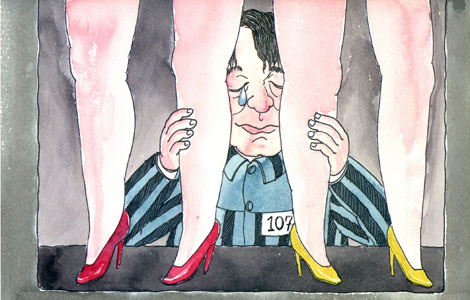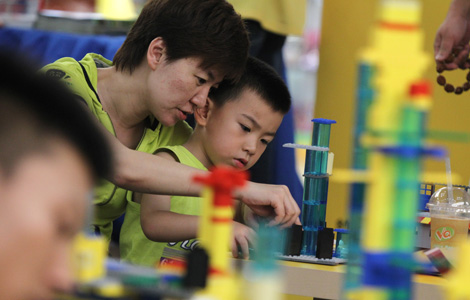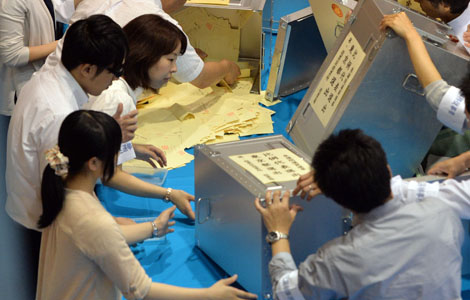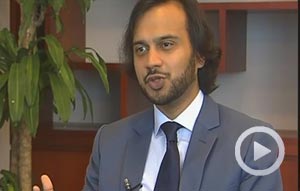County town attracts new industries
Updated: 2013-07-20 07:23
By Kang Bing and Chen Jia in Shijiazhuang (China Daily)
|
||||||||
Given the favorable investment environment in China's eastern coastal areas, it is hard for a small inland county to attract leading companies such as Coca-Cola Co and Tsingtao Brewery Co Ltd to boost its economic growth. But Gaocheng, a county-level city in North China's Hebei province, about 30 kilometers from the provincial capital of Shijiazhuang, has successfully done so.
The city is aiming to expand its economic zone's annual production value to more than 100 billion yuan ($16 billion) this year.
Gaocheng became the province's first national-level economic zone that is located in a county since October 2012. Before that, it was a provincial-level industrial park.
There are more than 260 enterprises in an area of 26.3 sq km in the area called Shijiazhuang Economic and Technology Development Zone. Together they reached a total industrial output value of 85 billion yuan last year, contributing about 30 percent of the county's gross domestic product and almost half of the county's fiscal income.
"We predict that tax income from the economic zone this year may increase to 6 billion yuan, up from 4.6 billion yuan in 2012," said Li Huaqiang, leader of the working committee of the development zone.
The priority development direction of Gaocheng's economic zone will target the industry agglomeration of biological pharmaceutical enterprises, Li said.
North China Pharmaceutical Group Corp, a large pharmaceutical manufacturer headquartered in Shijiazhuang, has invested 11 billion yuan in the zone since 2010 and launched the NCPC Hebei Huamin Pharmaceutical Co Ltd, focusing on cephalosporin products, a class of antibiotics originally derived from the fungus acremonium, previously known as cephalosporium.
The company now has the first complete industrial chain in the group for cephalosporin production, from research and development to market sales.
Xu Yonghong, deputy secretary of the Party committee of State-owned Huamin Pharmaceutical, said production expansion in the economic zone will help the company's structural transformation and technology upgrading.
According to Xu, the company created 3.2 billion yuan of production value last year, ranking it the largest among Chinese pharmaceutical companies. Its production value was only 1.67 billion yuan in 2011 before the completion of the new factory.
Xu predicted the production value will reach 4 billion yuan by the end of this year.
As the competition from both domestic and overseas markets is rising in making cephalosporin products, the company's profit is increasing at a slow pace, said Xu. "To address the challenge requires better research and technology based on independent intellectual property rights."
Huamin Pharmaceutical's cephalosporin products have been exported to the European Union and countries in South America.
"Our product catalog is adjusting toward the international markets based on the improvement in our technology," Xu added.
China Shijiazhuang Pharmaceutical Group Co Ltd invested 16 billion yuan in the economic zone to develop its research center and expand production. The Shijiazhuang No 4 Pharmaceutical has invested 1.4 billion yuan.
By the end of 2012, about 40 enterprises in the bioengineering and pharmaceutical industry had settled in Gaocheng's economic zone, realizing 43.5 billion yuan in output value, more than half of the total in the area.
Coca-Cola, Tsingtao, Archer Daniels Midland Co from the United States and Wilmar International Ltd from Singapore have launched product lines in the industrial park.
So far, the total investment of infrastructure construction of the economic zone has exceeded 3 billion yuan, according to Li Huaqiang of the working committee.
Enterprises in this area have provided about 100,000 jobs. Some 10 percent of the workers are from the county.
A report from the Institute of Industrial Economics in the Chinese Academy of Social Sciences showed in June that the growth pace of the county economies has remained faster than the nation's average level since 2008.
In 2010, the GDP of all the counties accounted for 49.8 percent of the nation's total. The trend for increasing growth still remains, according to the report.
Han Dongxue, a professor from Tsinghua University, said it is a good model to improve the county economy by promoting industrialization, which is also a driving force of urbanization.
"The successful development of county economies based on industrial agglomeration will help improve livelihoods and rebalance the rural-urban development," Han said.
Most Viewed
Editor's Picks

|

|

|

|

|

|
Today's Top News
Guangdong to probe airport bomber's allegations
Police meets GSK representative after scandal
US protests demand 'justice for Trayvon'
Minister rules out stimulus package
Top Chinese admiral to visit US this year
Victory improves Abe's hand
6.6-magnitude quake hits NW China
Yuan influence on the rise worldwide
US Weekly

|

|














